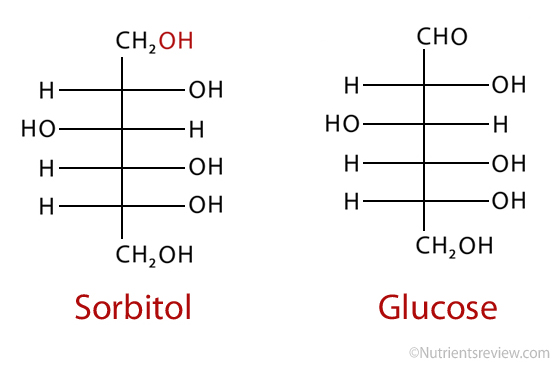More Chemical Additives in Food¶
Colours¶
Almost all products have an adde colourant to increase the marketability of the product, and while some colours are made from food processing, such as through browning, nearly half of all common colourings are synthetic. Every synthetic colour has an associated e number.
Erythrosine¶
Also known as Red No. 3 is an organoiodine compound, which is a derivative of fluorone. It has a cherry/pink synthetic colour, while it’s commonly used around the world, it has a partial ban in the US as high doses have proven to be carcinogenic in animal studies.
Azo Dyes¶
Are dyes which contain an azo linkage (\(\ce{Ph-N=N-Ph}\)). They typically have red, orange and yellow colours, though have a few undesirable side effects, such as:
- Rashes and swelling (if aspirin sensitive)
- Asthmatic symptoms
- Swelling of blood vessels
- Hay-fever and breathing problems
- Blurred vision
- purple patches on the skin
Since azo dyes tend to be primarily non-polar, they are often sulphonated (functionalised with \(\ce{SO3}\) groups) to increase their water solubility. Azo dyes are split across the azo linkage during metabolism, so it’s important t make sure that both fragments are sulphonated.
Separation of dyes can be easily performed using paper chromatography of TLC, and can be analysed using UV-Vis, FTIR, Titration and HPLC
Flavourings and Flavour Enhancers¶
Flavours are added to improve the taste and uniformity of a product. The also improve the marketability of the product. There are about 2000 natural and synthetic flavourings available and they are not regulated through legislation.
Flavour enhancers are compounds which don’t provide flavour itself, but serve to aid other compounds to make them taste better. these ARE regulated, under the e numbers 6##.
Flavouring compounds tend to be water soluble, polar and non-volatile, while odours tend to be volatile and less polar.
It’s important to recognise that naturally occurring flavours such as apples are incredibly complex and can contain over 100 compounds (\(\sim131\) for apples) that will determine its taste. In the case of naturally occurring flavour sources, small variations i the growth conditions or genetic makeup can have drastic changes to the composition of those flavouring compounds and thus to the taste.
There are three primary classes of flavouring agents:
- Aromatic raw material - These flavours that are isolated form natural, aromatic raw materials, such as vanilla, essential oils, etc.
- Nature identical - are synthetically produced compounds that are identical to their natural counterparts
- Artificial flavours - are original designs not found in nature, typically made of esters
Civet Absolute (CAS#68916-26-7)¶
Is the name for an essential oil that’s extracted form the Ethiopian civet cat. It’s used as a flavouring in beverages, ice cream, sweets, baked goods and chewing gum. It’s also used in perfumes, though Chanel is trying to phase it out for a nature identical compund. This is also the cat responsible for Kopi Luwak
Flavour Enhancers - Sweeteners¶
Are the most common form of flavour enhancer. They can be defined as either nutritive or nonnutritive, based on their ability to be metabolised, typically carbohydrate based sweeteners will be nutritive.
Sorbitol¶
Is a reduced form of glucose (technically not a carbohydrate) that provides \(2.6\:kcal/gram\) of energy, compares to carbohydrates \(4\:kcal/gram\), though consequently tastes half as sweet. It isn’t absorbed as quickly from the digestive tract as glucose, making it amore suitable sweetener for diabetics to consume.
Artificial Sweeteners¶
These are some currently FDA approved Sweeteners:
- Sucralose - made from sugar but is 600 times sweeter and is nonnutritive
- Saccharin - made from petroleum products and while it’s 300 times sweeter than sugar, it can leave a bad taste
- Aspartame - 200 times sweeter than sugar, is nonnutritive and has no aftertaste, though it is not heat stable
- Acesulfame - 200 times sweeter than sugar, is a useful allrounder and is heat stable
Flavour Enhancers - Other¶
Monosodium Glutamate¶
Ts found in tomatoes, cheese and cured meats and is commonly used to give a savoury, umami flavour to rich products.
Toxicology¶
Very little has be published on the toxicology of flavours, as natural flavours are incredibly diverse, there’s an ideology that natural is good for you”, so many flavours are already in use and there’s a lack of necessity.
Modifying and Conditioning Agents¶
Emulsifiers¶
See Surface and Colloids notes
Gums, Stabilisers and Thickening Agents¶
These are substances that keep a mixture or solution form changing its form or chemical nature, e.g. splitting of peanut butter into protein and oil. They can also come in the form of thickeners though, such as with ice-cream, where the addition of such substances will prevent the formation of crystals.
Many stabilisers are natural and are starch based, with some being made from pectin, casein, sodium caseinate, carrageenan and gelatine.
Acidultants, Alkalis and buffers¶
pH is a really important property in food and so it can be really important to ensure that the product remains at a particular pH. Most of these are derived from natural sources, e.g. citric acid frm lemon juice
Humectants¶
These are additives that are added to stop foods from drying out. They are typically hygroscopic polyalcohols and will attract water. Some examples include glycerol (422), propylene glycol, sorbitol and mannitol.

